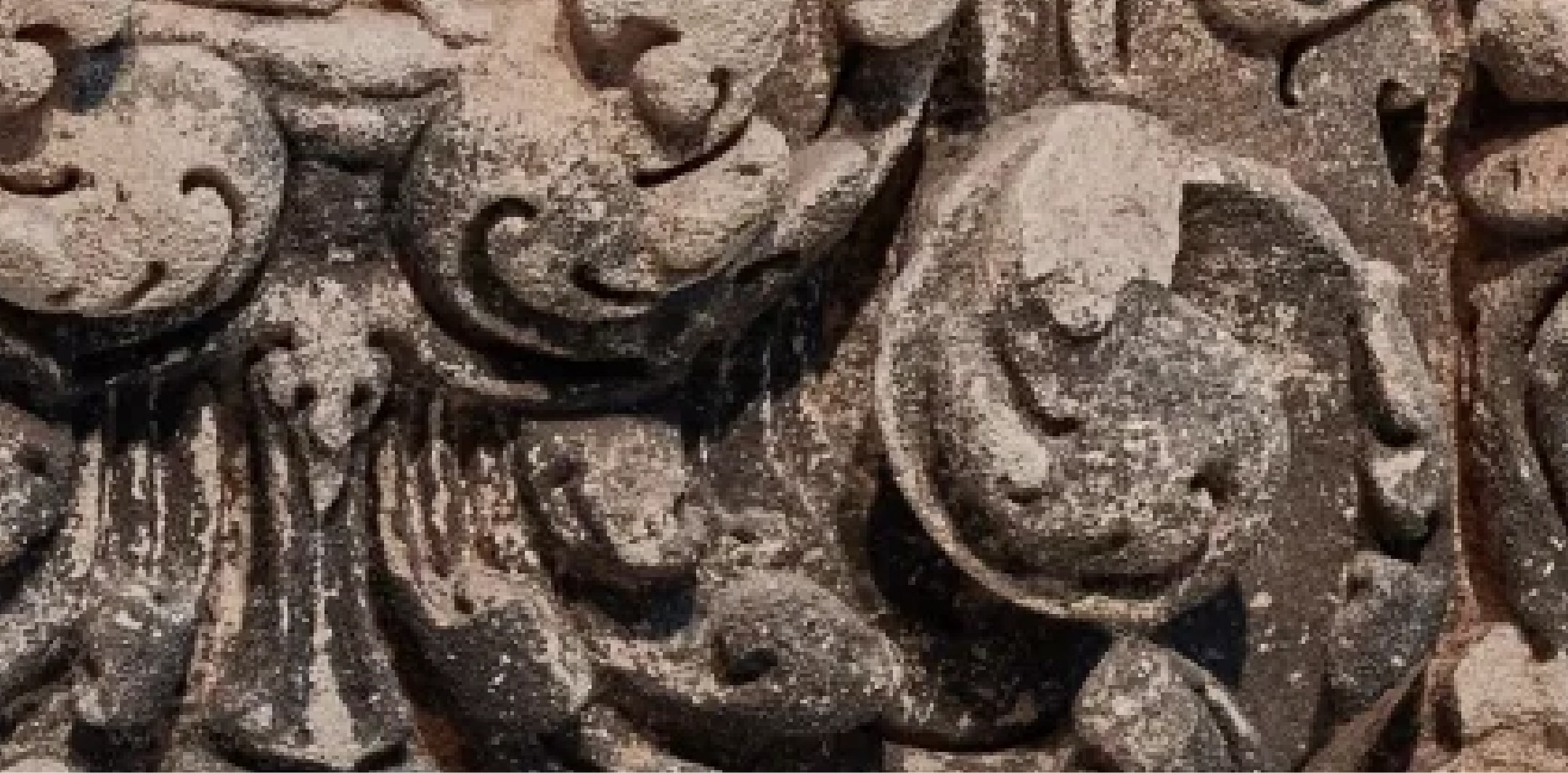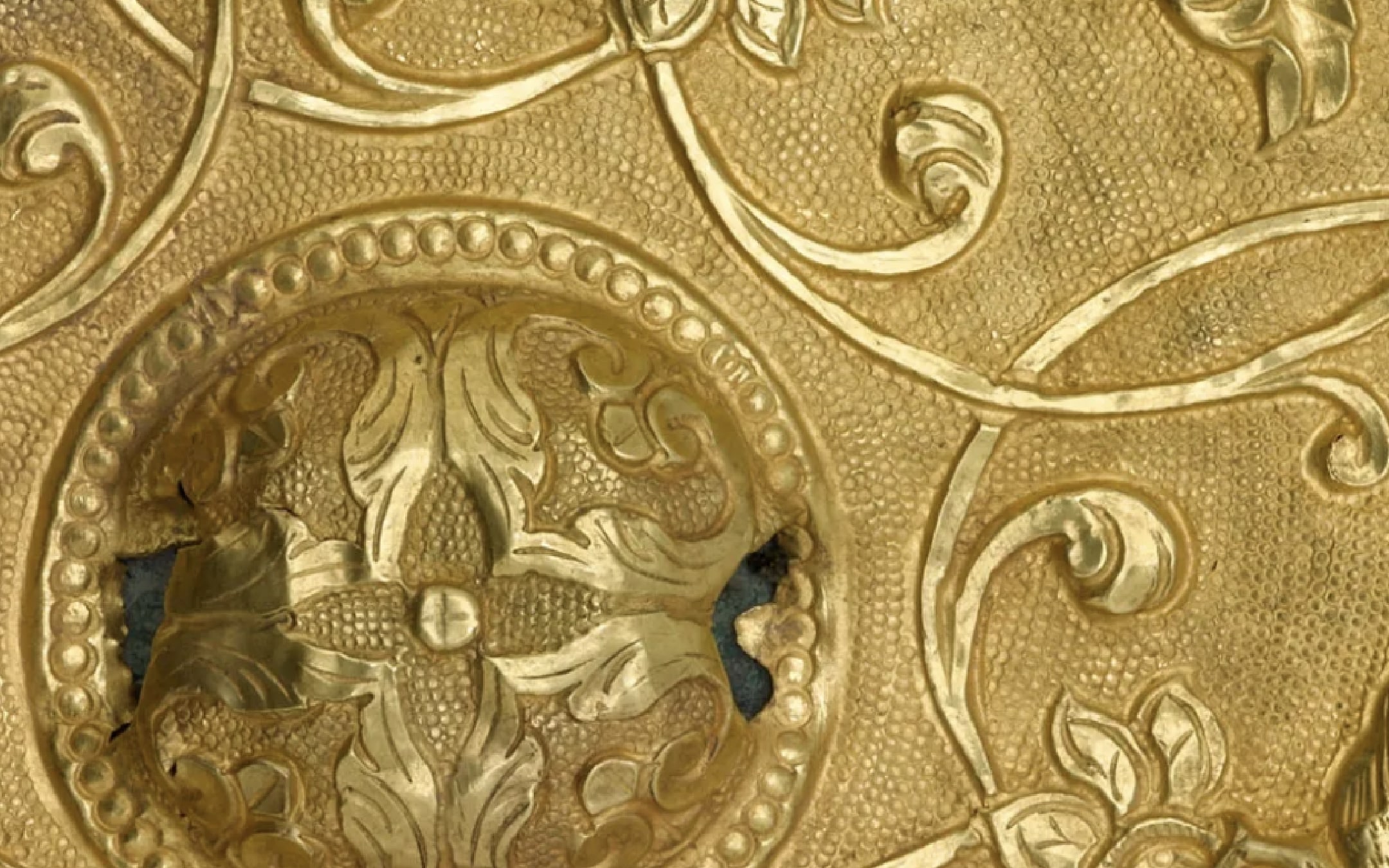Folio from a Khamsa (Quintet) by Amir Khusraw Dihlavi (d.1325); recto: left-hand half of a double-page Illumination; verso: text: Initial prayers on prime being of the divine presence

Terms of Use
Usage Conditions ApplyAt A Glance
-
Period
circa 1575-1600 -
Geography
Qazvin, Iran -
Material
Ink, opaque watercolor and gold on paper -
Dimension
H x W: 35.5 x 24.1 cm (14 x 9 1/2 in) -
Accession Number
S1986.72.2 -
EDAN ID
edanmdm:fsg_S1986.72.2
Object Details
-
Description
Detached bifolio from a dispersed copy of Khamsa (Quintet) by Amir Khusraw Dihlavi; text: Persian in black nasta'liq script; headings in white, gold, red and blue; recto: left-hand half of a double-page illumination, two columns, ten lines; verso: text: Initial prayers on prime being of the divine presence, four columns, twenty one lines; one of a group of three: the binding (S1986.472) and folios (S1986.72.1-2) are accessioned separately.Border: The text is set in an illuminated border. -
Label
Nizami's Khamsa inspired several subsequent poets to compose their own versions of the text. One of the most talented such poets was Amir Khusraw Dihlavi-meaning "from Delhi"-who also wrote in Persian. Born in Patiyal in northern India, Amir Khusraw excelled in both lyrical and epic poetry and enjoyed the patronage of several successive Indian rulers.This finely illuminated frontispiece and the gold-stamped covers formed part of the same copy of the Khamsa. Completed in sixteenth-century Iran, the covers were separated from the text sometime before the early twentieth century. The verses on the cover extol the qualities and attributes of books, considered a person's ideal companion. -
Provenance
To 1911Claude Anet (1868-1931), Paris, France. [1]From 1911 to 1942Henri Vever (1854-1942), Paris and Noyers, France, purchased from Claude Anet, Paris, France on October 19, 1911. [2]From 1942 to 1986Family member, Paris and Boulogne, France, by inheritance from Henri Vever, Paris and Noyers, France. [3]From 1986Arthur M. Sackler Gallery, purchased from a family member, Paris and Boulogne, France. [4]Notes:[1] Claude Anet was the pseudonym of writer Jean Schopfer. See Susan Nemazee, "Appendix 7: Chart of Recent Provenance" in An Annotated and Illustrated Checklist of the Vever Collection, Glenn D. Lowry et al (Washington, DC: Arthur M. Sackler Gallery, Smithsonian Institution; Seattle and London: University of Washington Press, 1988), p. 400. See also Glen D. Lowry and Susan Nemazee, "Appendix 2: Ledger of Acquisitions, 1894 and 1907-17" in A Jeweler’s Eye: Islamic Arts of the Book from the Vever Collection (Washington, DC: Arthur M. Sackler Gallery, Smithsonian Institution; Seattle and London: University of Washington Press, 1988), p. 231.[2] See note 1.[3] See the Agreement for the Purchase and Sale of the Henri Vever Collection of January 9, 1986, Collections Management Office.[4] See note 3. -
Collection
Arthur M. Sackler Collection -
Exhibition History
Love and Yearning: Mystical and Moral Themes in Persian Painting (August 30, 2003 to February 22, 2004)Variations on a Script: Islamic Calligraphy from the Vever Collection (February 18 to September 16, 1990)A Jeweler's Eye: Islamic Arts of the Book from the Vever Collection (November 20, 1988 to April 30, 1989) -
Previous custodian or owner
Henri Vever (1854-1942)Claude Anet (1868-1931)François Mautin (1907-2003) -
Origin
Qazvin, Iran -
Credit Line
Purchase — Smithsonian Unrestricted Trust Funds, Smithsonian Collections Acquisition Program, and Dr. Arthur M. Sackler -
Type
Manuscript -
Restrictions and Rights
Usage Conditions Apply
There are restrictions for re-using this media. For more information, visit the Smithsonian's Terms of Use page.
The information presented on this website may be revised and updated at any time as ongoing research progresses or as otherwise warranted. Pending any such revisions and updates, information on this site may be incomplete or inaccurate or may contain typographical errors. Neither the Smithsonian nor its regents, officers, employees, or agents make any representations about the accuracy, reliability, completeness, or timeliness of the information on the site. Use this site and the information provided on it subject to your own judgment. The National Museum of Asian Art welcomes information that would augment or clarify the ownership history of objects in their collections.
Keep Exploring
-
Related Resources
-
Date
-
Name
-
Place
-
Topic
-
Culture
-
Language
-
Object Type

